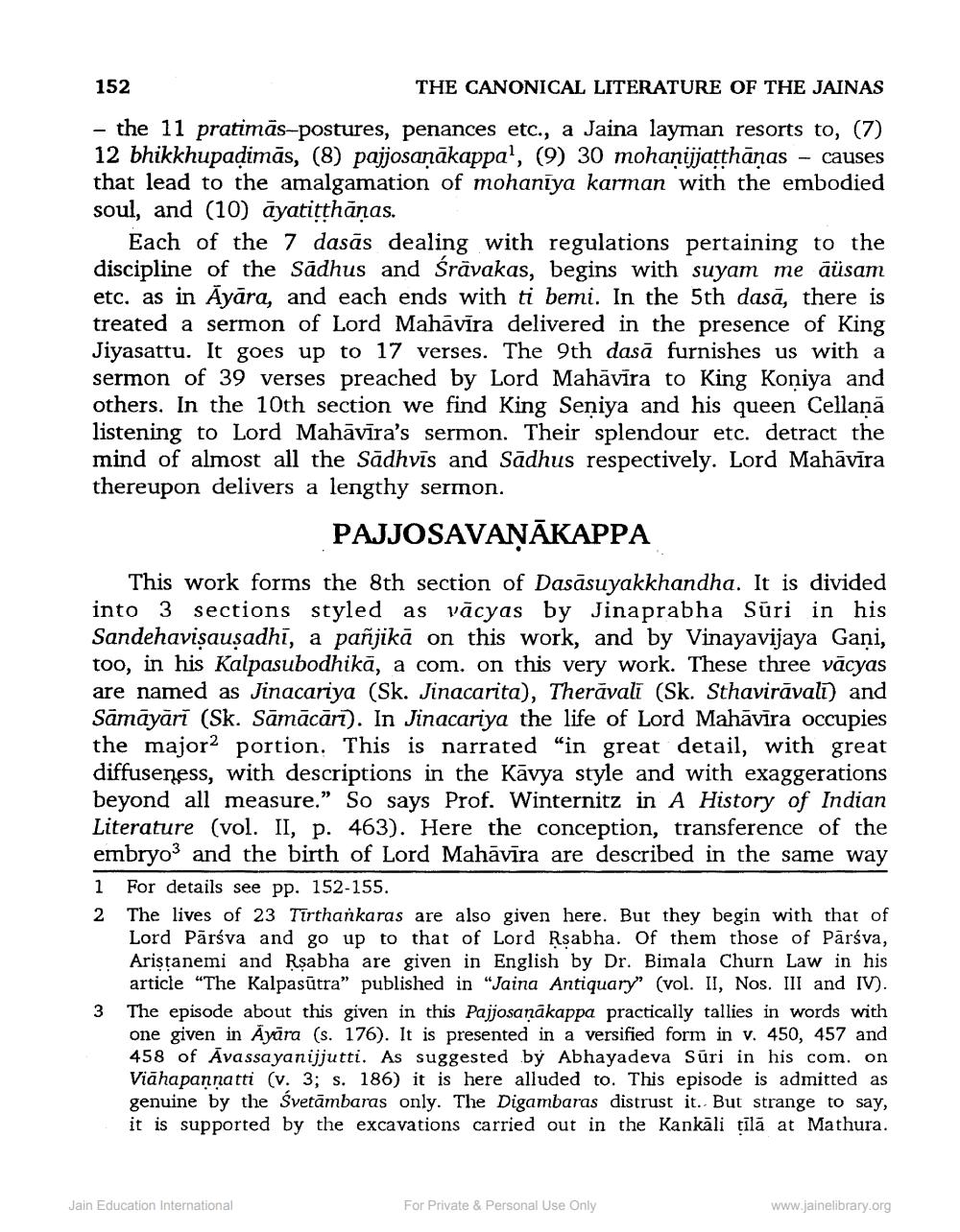________________
152
THE CANONICAL LITERATURE OF THE JAINAS
- the 11 pratimās-postures, penances etc., a Jaina layman resorts to, (7) 12 bhikkhupadimās, (8) pajjosaņākappa', (9) 30 mohanijjatthānas - causes that lead to the amalgamation of mohaniya karman with the embodied soul, and (10) āyatitthāņas.
Each of the 7 dasās dealing with regulations pertaining to the discipline of the Sadhus and Śrāvakas, begins with suyam me disam etc. as in Ayāra, and each ends with ti bemi. In the 5th dasā, there is treated a sermon of Lord Mahāvīra delivered in the presence of King Jiyasattu. It goes up to 17 verses. The 9th dasā furnishes us with a sermon of 39 verses preached by Lord Mahāvīra to King Koniya and others. In the 10th section we find King Seniya and his queen Cellanā listening to Lord Mahāvīra's sermon. Their splendour etc. detract the mind of almost all the Sadhvis and sādhus respectively. Lord Mahāvīra thereupon delivers a lengthy sermon.
PAJJOSAVANĀKAPPA
This work forms the 8th section of Dasāsuyakkhandha. It is divided into 3 sections styled as vācyas by Jinaprabha Suri in his Sandehavisausadhi, a pañjikā on this work, and by Vinayavijaya Gani, too, in his Kalpasubodhikā, a com. on this very work. These three vācyas are named as Jinacariya (Sk. Jinacarita), Therāvali (Sk. Sthavirāvali) and Sāmāyārī (Sk. Sāmācāni). In Jinacariya the life of Lord Mahāvīra occupies the major2 portion. This is narrated "in great detail, with great diffuseness, with descriptions in the Kavya style and with exaggerations beyond all measure." So says Prof. Winternitz in A History of Indian Literature (vol. II, p. 463). Here the conception, transference of the embryo3 and the birth of Lord Mahāvīra are described in the same way 1 For details see pp. 152-155. 2 The lives of 23 Tirthankaras are also given here. But they begin with that of
Lord Pārsva and go up to that of Lord Rsabha. Of them those of Pārsva, Aristanemi and Rsabha are given in English by Dr. Bimala Churn Law in his
article “The Kalpasūtra” published in "Jaina Antiquary (vol. II, Nos. III and IV). 3 The episode about this given in this Pajjosaņākappa practically tallies in words with
one given in Ayāra (s. 176). It is presented in a versified form in v. 450, 457 and 458 of Āvassayanijjutti. As suggested by Abhayadeva Sūri in his com. on Viāhapannatti (v. 3; s. 186) it is here alluded to. This episode is admitted as genuine by the Svetāmbaras only. The Digambaras distrust it. But strange to say, it is supported by the excavations carried out in the Kankāli tīlā at Mathura.
Jain Education International
For Private & Personal Use Only
www.jainelibrary.org




